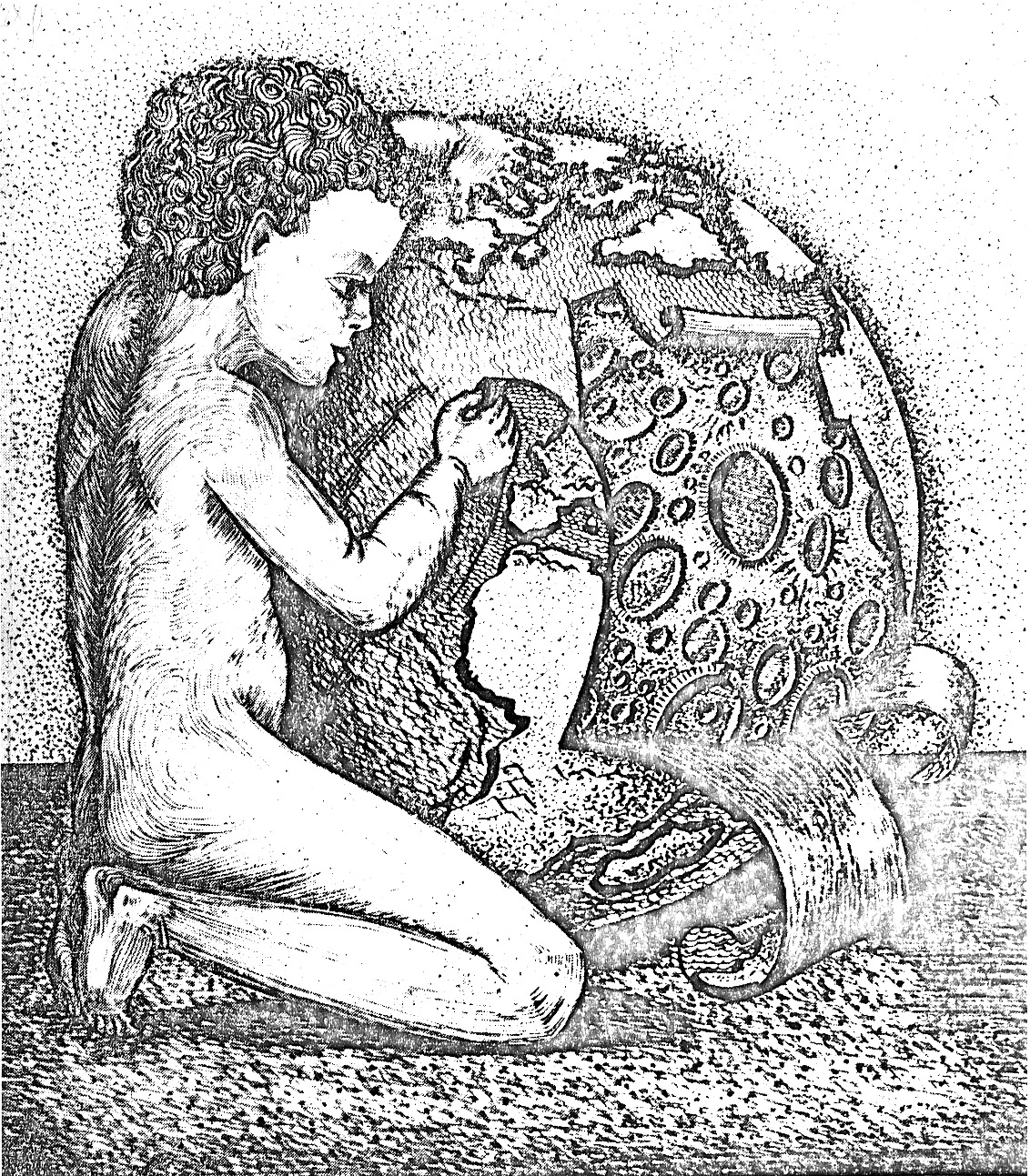June 28, 2009
Unpeeling History

drawing from unknown book, photocopied long ago
I was delighted today, while unpacking boxes that were taped up 9 years ago, to uncover a wonderful copy of a drawing that I love. It is just a photocopy from a book, but no info about the book remains. I remember it was a Russian book about the Moon and planets from the 1970s. At the time I was a grad student researching impact craters on the Moon and Mars, and realized that about 4 billion years ago the Earth must have looked like those worlds. But the Earth is the most dynamic planet in our solar system, constantly burying the landscape with sediments and lavas, or worse, subducting it into the mantle, erasing it from history. But under the top layers of the continents there should be impact craters everywhere. At the time there were only about 60 terrestrial impact craters known or suspected, and most were relatively young smaller ones. This drawing appealed because it showed what was waiting to be discovered, and the naked youth indicated that the discoveries would be made by innocents with new perspectives. Just what grad students want to think about themselves! Now, no thanks to me, 176 impact craters are confirmed within the top few kilometers of the Earth's surface and dozens more are suspected. I bet there are many more for today's innocents to uncover.,
Chuck Wood
OT COMMENT: I have added to LPOD Classics a scanned copy of Phillip Fauth's 1894 article Neue Beiträge zur Begründung einer modernen Selenologie or New Contributions to the Foundation of a Modern Selenologie. Fauth initiated a little-followed quantitative approach to the study the Moon. My German is too rusty to do it justice (it is about crater depths and slopes) but if someone would like to summarize it in English that would be a valuable service. Thanks!
Yesterday's LPOD: Charcoal Excursion
Tomorrow's LPOD: Golden Copernicus
COMMENTS?
Register, Log in, and join in the comments.



